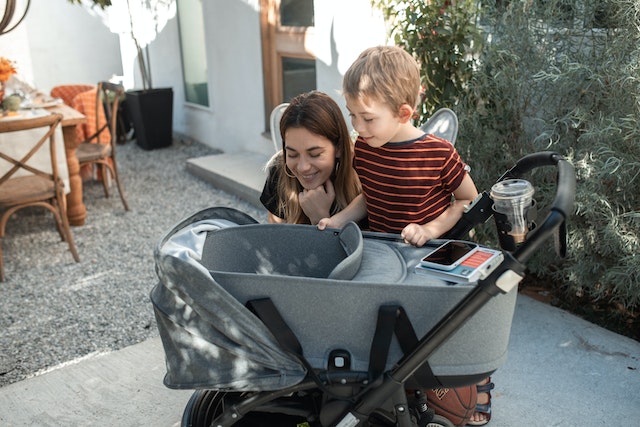Read the detailed description of Quest's Program Details!
As Thanksgiving quickly approaches it seemed like a great time to focus on gratitude. Each year more and more really cool research is coming out about the importance of gratitude in relation to positive mental health outcomes. While this can be important to know, I think always the next step is how to move our knowledge in an area to instead develop and execute active behaviors that support positive outcomes for children and adults.
A great article by Amy Morin, LCSW, cites some of the benefits of practicing gratitude, which I will briefly summarize here, but suggest that her full article is worth a read for more information. [1] Morin includes research that demonstrates multiple benefits from being grateful from children as young as 5 to adults. [1] Researchers at the University of North Carolina (UNC) at Greensboro also argue that gratitude in children involves perspective taking and emotional knowledge, skills that children begin to develop more quickly around ages three to five. [2] Morin cites research regarding how gratitude can be linked “to everything from improved psychological well-being to better physical health. Grateful people tend to sleep better and even live longer.” In addition, grateful adults are found to be happier and more hopeful. [1]
The Raising Grateful Children Project at UNC Chapel Hill provides research and intervention strategies regarding how to best teach gratitude. This UNC Project has found that gratitude is “an experience that has four parts:
- What we NOTICE in our lives for which we can be grateful
- How we THINK about why we have been given those things
- How we FEEL about the things we have been given
- What we DO to express appreciation in turn
Older children and adults are more likely to spontaneously engage in all four parts of gratitude, but younger children may only engage in some of these parts, only when prompted. Children may show more gratitude as they gain cognitive skills, collect practice with those skills, and begin to connect the NOTICE-THINK-FEEL parts of experiencing gratitude with the DO part of expressing gratitude.” [2]
Recommendations from UNC regarding how to foster gratitude for these 4 areas (notice, think, feel, do) include:
NOTICE: What have you been given or what do you already have in your life for which you are grateful? Are there gifts behind the material gifts for which you are grateful, like someone thinking about you or caring about you enough to give you the gift? [2]
One of my favorite ways for both kids and adults to be present and notice what to be grateful for is to create a daily gratitude journal. This can be a place to list out what a person is grateful for in that moment including small and big things. I like to also have families create a combined gratitude journal or list. This can be a nice way for different family members to hear what others are grateful for and to create a systematic way to appreciate what people are grateful for over time. Other ideas that are similar would be to write down things that each family member is grateful for on small slips of paper or index cards and put them in a container and then each week review what each family member had put in the container. This can become even more challenging when family members are encouraged to list multiple things each day or each day come up with at least one thing that they haven’t previously listed.
THINK: Why do you think you received this gift? Do you think you owe the giver something in return? Do you think you earned the gift because of something you did yourself? Do you think the gift was something the giver had to give you? If you answered no to these questions, then you may be more likely to be grateful. [2]
These reflective questions are great examples of ways to get children thinking more critically in the area of gratitude, but also help to create a structure to be more present regarding gratitude.
FEEL: Does it make you feel happy to get this gift? What does that feel like inside? What about the gift makes you feel happy? These questions help the child connect their positive feeling to the gifts that they receive in their lives. [2]
Some of my favorite ways to actively have kids reflect on feelings is to have them rate them on a number scale. I find this strategy particularly helpful for children with attention and social difficulties as at times their vocabulary or access to emotionally laden words tends to need more development. This can be done by asking things such as having a child rate from one to five how “happy” or “excited” or “surprised” they were to get a gift. You can also show them a list of emotion words with faces and have them point out which ones are relevant for the situation. Regarding how a child feels on the inside, it can be really helpful to ask kids questions about body sensations or provide your own modeling such as saying something like, “When I was handed this gift I felt excited and noticed that my heart was beating faster and I started talking more quickly.” For further understanding of bodily sensations, having kids draw out what they notice in different parts of their body on a drawing can also be fun and informative.
DO: Is there a way you want to show how you feel about this gift? Does the feeling you have about this gift make you want to share that feeling by giving something to someone else? Prompting children after experiences of gratitude in order to motivate acts of gratitude, whether they be acts of appreciation or paying it forward, may help children connect their experiences and actions in the world. [2]
The “DO” area to me is super important as we all learn best when we add a doing or action component. I recommend creating a plan as a family for how your family would like to show gratitude or “pay it forward.” Expressing thanks, volunteering, practicing acts of kindness are just some of the ways we can practice gratitude.
I hope that these tips are helpful. As discussed above, much in this article came from the two citations below and both articles include more aspects of this important topic that I didn’t mention. My biggest hope for you and your family is that you can find ways to systematically build in some of these gratitude strategies since the more we practice gratitude the better we get at it and the happier and healthier we feel.
[1] Morin, A, (reviewed by Snyder, S). How to teach children gratitude: It’s more than just saying thank you. November 11, 2020
https://www.verywellmind.com/how-to-teach-children-gratitude-4782154
[2] Hussong, A., What parents neglect to teach about gratitude. November 21, 2017, Greater Good Magazine, https://greatergood.berkeley.edu/article/item/what_parents_neglect_to_teach_about_gratitude

